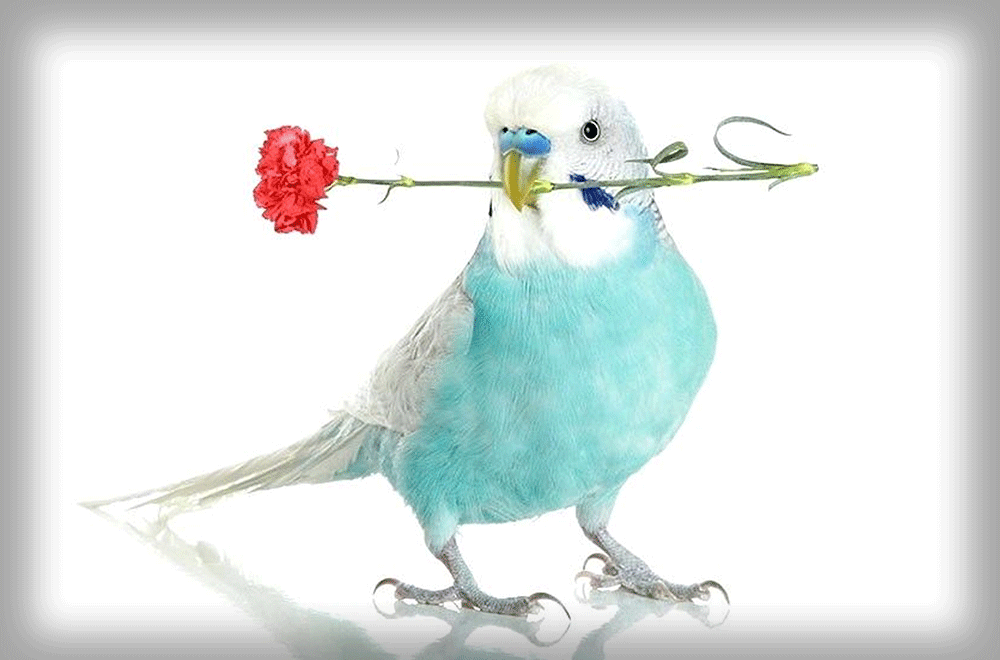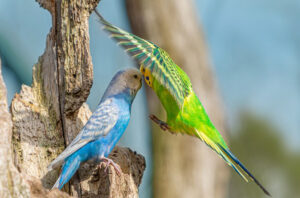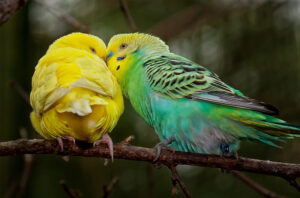You may have watched the famous animation movie “How to Train Your Dragon” and saw what it took for Hiccup, the protagonist, to train his own dragon, “Toothless”. Animation movies usually inspire people to take action and achieve their goals. Learn how to train your parakeet by following the below article.
So, if you happen to have a parakeet which you want to train by following the same steps that Hiccup followed, then I think you should have in mind two things:
- Parakeets are not a type of dragons and they won’t breath fire if you ask them to. To train your parakeet, you need to follow given steps and apply certain techniques.
- Parakeets are one of the smartest birds that needs to be trained if you ever wanted to bring the best out of them. Today’s article will focus on the techniques and strategies that you need to follow in order to train your pet bird.
With that being said, let’s start with the first step which is going to tackle the necessity of a good environment in the process of training your Parakeet.
1 Create a Comfortable and Lit Environment
There is a reason why the phrase “home sweet home” denotes that there is no better place than the one you live in, and this applies to birds as well. Parakeets needs to feel that they are in a secure and comfortable environment in order for them to adapt to their surroundings and get rid of that sense of fear. Read more about how to take care of a budgie.
Parakeets are pets that need to live in a clean and spacious environment. So, if you are thinking to buy a 5*5* inches cage from a thrift shop, then you should reconsider your decisions.
The cage should be an ample-sized one because the Parakeet needs space in order not to feel bored. When transferring your parakeet to its new cage, you need to make sure that the bird will move on its own. No matter what is the situation, never try to put your hand in the there and force the pet to move, this will be considered as a threat and your parakeet will get afraid of you and move back further into the cage.
Most importantly, you need to put the recipient cage in a lit environment. Parakeets are birds that love to get exposed to sun light, these are not bats. Put them in a place with some activity in it, make sure that the place is not too quiet, otherwise the bird may get affected negatively by the silence.
In the next steps, we are going to talk about crucial elements that will allow your parakeet to get familiar to you. Continue reading to read the tips on how to train your parakeet
2 Talk to Your Parakeet
If you want to expose your bird to a Michael Jackson song and expect it to learn the alphabet from it, then it will surely utter “You’ve hit by a smooth criminal” with time, but it will never reply to you when you talk to it.
Parakeets are friendly animals that need to get used to their owners in order to start interacting with them. To make your parakeet talk to you, you need to talk to it first so that it can get used to your voice.
Make sure to talk to keep talking to your bird. Talk with it about anything and everything (and speak about your secrets in front of it at your own risk). What matters is that you keep talking to bird, even if it doesn’t reply to you at first. make sure that your voice is at a moderate level and that your tone is stable. You don’t want to scream or talk loudly to it, otherwise it will consider this as a threat and it might fly away.
After talking to your pet, try to use the following strategy which based on the system of action and reward.
3 Use the Reward Strategy
Once your bird gets familiar with its new environment and new owner, you can move to teach him what to do and what to utter in return for a little treat. The techniques of giving a treat whenever your bird does a certain action is know as the reward strategy, and you may not know that this strategy is applied to even humans.
Simply put, your bird will learn that it will receive a reward whenever it does what you ask it to and that it won’t receive anything if it disobeys.
You need to first get your parakeet out of the cage and put in on your index finger, this is known as hand training and this one of the first steps to train your Parakeet. Then, you need to utter a given set of words such as “up, up, up” while nudging its chest, this will teach the pet to learn the auditory cue for the action and you can even teach it to react with different actions to different signals.
Afterwards, you can teach your parakeet to move to different parts of your body and explore it for itself. Parakeets love freedom and explorations and by allowing it to move to different parts of your body, such as the shoulder and the head, you are unconsciously sending messages to it that you are no longer its owner but rather its friend.
When your bird gets used to the system of action and reward, you can move to teaching your bird its first basic command.
4 Teach your parakeet the “Step-Up” Command
The “Step-Up” command is a fundamental move that all birds should know how to perform. It is important for you to teach your budgie how do this trick since all advanced moves are built upon this one.
Teaching this particular move to your bird will help you to scale your training process to another level as well as in other tasks such as cleaning the cage and vet-visits.
The “Step-Up” command is pretty simple. Your bird should learn how to step up onto your finger or hand on command, and step back off again. Teaching this command is relatively easy and will your bird will take a short period to get used to it.
To begin with, you need to present your parakeet with a perch. Perches mostly look like wooden dowels although some of them are made of metal, and the reason behind presenting a perch to your bird is to make get used to stepping up on it.
Then, start the training by gently nudging your parakeet’s chest since this move will represent the physical cue that tells the parakeet to step onto the perch. You need to also create an auditory cue for your bird such as “up, up, up”. The bird will eventually associate the voice with the action of stepping up and will react more easily later on.
After that, make sure to move your finger to the end of the dowel while uttering the words “up, up, up” for example. The bird will understand the cue and will step on your finger. When it does so, make sure to take your parakeet out of the cage while it is perched on your finger.
After teaching the “Step-Up” command to your parakeet, move to something which is a bit tricky in order to scale the training process.
5 Train Your Bird to Wave Hello
Training your pet bird to wave hello is one of the coolest tricks that your parakeet can perform, especially if your bird utters the word “Hello” with it. to do this trick, your bird needs to be familiar with the “Step-Up” command in order for it to trigger its learning mechanism.
First, make sure to place your bird on a perch in front of you and nudge its chest softly. You need to make sure that your bird is fully comfortable with its training space.
Next, start giving the wave command by uttering the word “Hello” in a soft voice and a normal tone. Your bird will understand that this is a new voice cue and will look forward to know what it means.
After doing the above steps, make sure to extend your finger slowly to the bird while noticing its feet. If the bird lifts one of its feet to step up onto your finger, the slowly pull your finger away from it so that it can recognize that this cue only asks from it to lift its foot in the air.
You need to bear in mind that you should repeat this process over and over again for 1-3 during a 15 minutes training session. When the pet loses interest, conclude your session with a treat and repeat the same process the in the upcoming days. Eventually, your Parakeet will become a waving pro.
With that being said, it seems fair to shed lights on the importance of knowing how to teach your parakeet the right way. Birds in general love freedom and Parakeets are no exception. So, if you ever wanted to train your parakeet, make sure to take the needed time to make it feel comfortable and act with ease.
If you like today’s article, make sure to visit us more often for amazing tips and strategies to teach, train, and take care of your bird in the best way.




